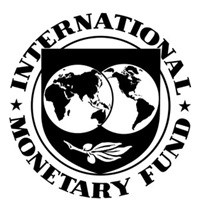IMF report reveals vulnerability of SA economy

The concern stems primarily from three interrelated issues:
- SA's high current account deficit
The report highlights that at 6.8% of GDP South Africa has one of the highest current account deficits amongst all emerging markets.
- A risky funding mix
To a large extent, the current account deficit has been funded by foreign portfolio inflows which are notoriously fickle in nature. Foreign ownership of SA listed equities and government bonds currently stand at 34% and 36% respectively. Given the capricious nature of this type of investment, inflows can swiftly switch to outflows.
- The liquidity of the country's financial markets
SA has the biggest and most liquid stock exchange in Africa. Consequently, if foreigner investors decide to sell SA bonds and equities this process can take place quickly, leaving the country short of the capital required to maintain its current level of expenditure.
Since the beginning of 2014 this risk has turned into a reality, exposing South Africa's economic vulnerabilities. For the year to date, foreigners have sold approximately R27 billion's worth of SA government bonds, resulting in higher yields and a depreciating currency.
Increase in interest rates
The catalyst for the reversal in capital flows has been the 'tapering' of quantitative easing (QE) in the US. It is now widely anticipated that QE will be concluded by the end of the year and that interest rates in the first world will begin to rise in 2015. In this environment, South Africa's ability to attract foreign capital is likely to remain under pressure, suggesting that bond yields will continue to rise and that the exchange rate will remain weak.
With volatility set to continue in local markets, the importance of diversification when constructing an investment portfolio is highlighted. Diversification across investment types and across economies helps increase certainty of outcome, as the impact of unexpected market events is reduced.
Good value for investors
In addition to diversification benefits, first world markets are currently offering investors good value. Based on current valuations it is possible to invest in some of the largest and most recognisable companies in the world on dividend yields in the region of a healthy 3-4%. With economic growth prospects steadily improving in these regions and taking into consideration the rand's vulnerability to a slowdown in foreign capital inflows, the investment case for offshore equities remains compelling.
Retired investors are likely to benefit from higher bond and property yields in the future. However, while bond and property yields are rising, investors will experience capital loss and hence should avoid these asset classes. Investors will be best served by investing in companies that are able to grow their earnings and dividends in challenging economic conditions. For retired investors holding a portion of their investments in cash, they are likely to benefit from rising interest rates in South Africa.
























